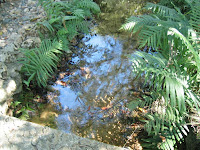Made National Artist in Painting in 1976, Victorio C. Edades was the pioneer in modernism in the Philippine art scene. In fact, he is known as the Father of Modern Philippine Painting. A lot of his paintings portrayed the hardships of the working class, using dark and somber colors and bold strokes.Edades was born on December 23, 1895 in
Dagupan, Pangasinan to Hilario Edades and Cecilia Edades. He obtained his early education in barrio schools and went to a high school in Lingayen. In 1919, he left for the United States to study Architecture and Fine Arts at the University of Washington in Seattle. During the summer, he worked in the salmon canneries of Alaska. It was also during his stay in the U.S. that he married American Jean Garrott, with whom he had his only daughter, Joan.
He returned to the Philippines in 1928 and in the same year had his first one-man show at the Philippine Columbian Club. He also came up with two of his most well-known works in that year: The Sketch (also known as The Artist and His Model), and The Builders.
Edades joined the University of Santo Tomas in the 1930�s where he stayed on for three decades and became dean of its Department of Architecture. It was he who introduced the Liberal Arts program which led to a Bachelor�s Degree in Fine Arts, a first in the Philippines since art was only taught in vocational schools then. Edades later formed the Triumvirate of Modern Art with Carlos V. Francisco and Galo B. Ocampo, after they produced a mural for the lobby of the Capitol Theater on Escolta Street. This began the growth of mural painting in the Philippines.
However, it was also during this period that the infamous debate between the modernists and the conservatives, including Ariston Estrada, Ignacio Manlapaz and Fermin Sanchez, took place. This was interrupted by the second World War, but resumed in 1948, with sculptor Guillermo Tolentino and painter Fernando Amorsolo representing the conservatives.
In 1938, Edades, together with Ocampo and Diosdado Lorenzo, established the Atelier of Modern Art in Malate, Manila. This resulted in the formation of the Thirteen Moderns, considered the pioneers of modern art in the Philippines. This group was led by Edades and included Ocampo, Francisco, Lorenzo, Vicente S. Manansala, H. R. Ocampo, Demetrio Diego, Bonifacio Cristobal, Cesar F. Legaspi, Jose Pardo, Arsenio Capili, Ricarte Puruganan, and Anita Magsaysay-Ho.
Aside from this, Edades co-founded the Mindanao Ethnoculture Foundation, which focused on the indigenous culture and heritage of Mindanao. In his last fifty years, the subject of his paintings had also become indigenized.
Edades retired from the UST at the age of 70, and he was bestowed with the degree of Doctor in Fine Arts, Honoris Causa. He then settled in Davao after retirement.
On May 7, 1985, Victorio Edades passed away at the age of 89.
Edades� major works include:
1928 The Sketch, National Museum Collection
1928 The Builders, Cultural Center of the Philippines Collection
1935 Interaction, with Carlos V. Francisco and Galo B. Ocampo
1976 Demoiselles Davao
1979 Kasaysayan, a mural for a Manila bank
Achievements:
1961 Pro Patria Award, given during the Rizal Centennial Celebration
1964 Patnubay ng Sining at Kalinangan Award, from the City of Manila
































